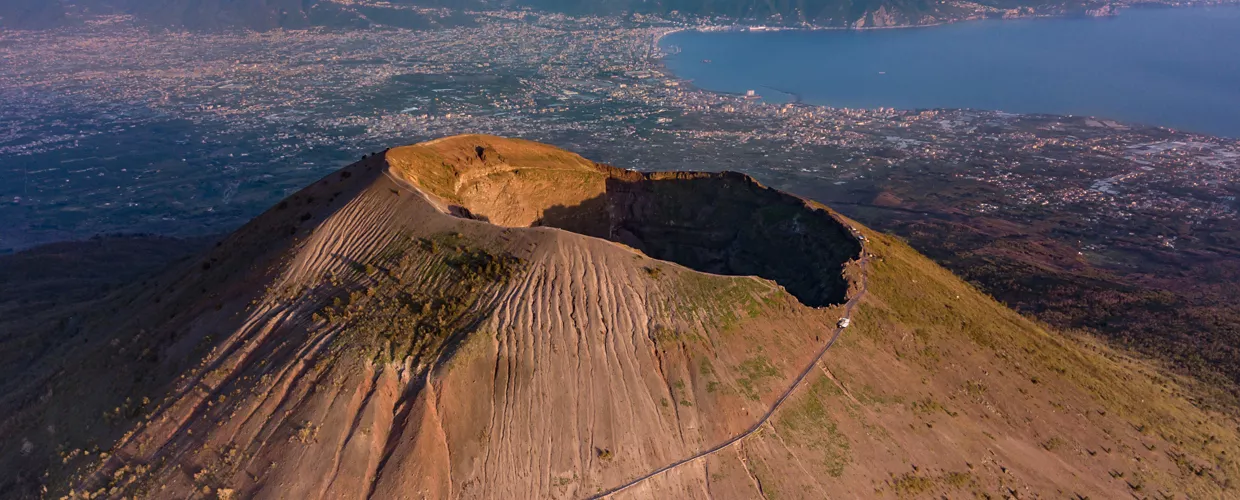
Overview
A symbol of the city of Naples, Vesuvius is one of the most important active - or, to be precise, quiescent - volcanoes in continental Europe and one of the most studied in the world, not least because of its potential danger. Famous above all for the incredible eruption in 79 A.D. that destroyed the cities of Pompeii and Herculaneum, it is a tourist attraction of enormous value, both for those who love holidays in contact with nature and for food and wine enthusiasts.
Vesuvius can be reached from Naples by car, public transport or organised tours. Once on site, those who enjoy slow tourism can stroll among the vineyards on the slopes of the volcano and then taste the area's excellent wines. The more sporty, on the other hand, can indulge in trekking. The Vesuvius National Park, in this regard, consists of eleven paths with a total length of 54 kilometres, with the main route running along the western part of the crater rim.
The historical and archaeological areas included in the park are not only the most renowned, such as Pompeii and Herculaneum, but also other valuable sites such as Somma Vesuviana, Villa Regina in Boscoreale, the sumptuous 18th-century villas of the Miglio d'Oro and the Masserie Vesuviane.
Vesuvio, 80044 Ottaviano NA, Italia